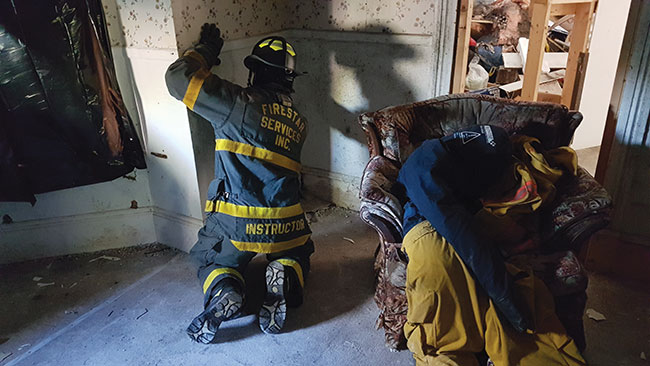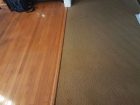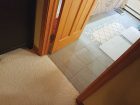
Back to basics: Be a sweeper, not a patter
By Mark van der Feyst
Features editors pick Mark van der Feyst When a firefighter sweeps the wall as shown, they are going to ensure that they will come across the windowsill and window. Photo: mark van der feyst
When a firefighter sweeps the wall as shown, they are going to ensure that they will come across the windowsill and window. Photo: mark van der feyst In my last column, we looked at the reasons why we can become disoriented and also some of the action steps that can be taken by firefighters to help themselves when they do. We are going to dive a little deeper into this area again to explore some more details of the action steps.
When a firefighter is disoriented or lost, it is important for the firefighter to quickly size up where they might be location-wise so this information can be relayed to the Incident Commander (IC), as well as the RIT team. This will allow the outside help — the RIT team — to make direct access or an entry point to that spot, if possible, to hasten the rescue operation.
For the firefighter, they can help themselves by locating a wall. By getting to a wall quickly, they will be able to start following that wall until they come across a window or a door. The building code of Canada and each province specifies and requires that there be windows and doors in each room that is occupied by a human. This provides for two means of egress for any person – the door being the first choice and the window as secondary means. If a firefighter locates a window, they are able to perform an emergency escape maneuver to get out of the building quickly. We will discuss these in more details in the months to come.
When following the wall of the building, it is important that the firefighter sweep high and low along the wall to locate the window and doors. Windowsills are going to be located within a range from two feet to about four feet in height from the floor. When a firefighter sweeps the wall as shown in Photo 1, they are going to ensure that they will come across the windowsill and window. When they only “pat” the wall, they are ensuring that they will miss the window and door handles. A “wall patter” is a firefighter that gives the wall high fives with their one hand as they move along. Don’t be a wall patter. Sweeping the wall is going to require a bit more work as you move your hand up high and down low in constant contact with the wall – you want to be a sweeper!
Besides the wall, the floor itself can lend many clues to our location. In Photo 2, we can see two types of floor coverings that are typically found in a residential building. Hardwood floor is sometimes found in dining areas, formal living rooms (dens), bedrooms (depending on what floor you are on), and sometimes entries. The carpeted flooring pictured can also be found in bedrooms, living rooms, hallways or great rooms. In Photo 3, we see another example of floor covering with ceramic tiles. These coverings are usually found in entries, bathrooms, kitchens and laundry rooms.
Feeling the floor to determine what type of covering it is or getting close with our face and flashlight to see what type of covering it is will help us determine where we are. If visibility is not too bad, perhaps we can also see other items in the area to help identify our location. This information needs to be passed on to IC and the RIT team.
There are times that we may find ourselves lost or disoriented inside a commercial or industrial building. The same idea of locating a wall is going to be our best course of action. Inside a commercial or industrial building, we are not going to have varying flooring surfaces, or many windows along the wall, or even many doors for that matter. But there will be a door at some point.
To locate the wall in these types of buildings, we can use building features to help us. Certain features such as the expansion joint lines on the concrete floor will guide us to a column and continuing it will guide us to a wall. This may take a bit of time to locate due to the distance from where we are located and the wall. Usually the distance between columns are going to be between 25 to 50 feet and the expansion lines will run the distance from column to column. No matter what direction the expansion lines goes in, it will lead to a wall.
Trying to see what other features are around also apply to commercial and industrial buildings. In other building applications such as a high rise, this will be especially important. In an office type setting, there will be a various office cubical layouts with or without symmetry to it. If there is a symmetrical layout of cubical walls, they will help lead you to a wall where you may find an exit stairwell as well as a window. When there is no symmetrical layout of cubicles, try to locate the building core. This is where the elevator banks and exit stairways will be.
Seeing as most fires responded to are in residential buildings, it is important to practice our search skills of sweeping the walls high and low to locate our windows and door handles for our quick self-rescue.
Mark van der Feyst has been in the fire service since 1999 and is a full-time firefighter in Ontario. He teaches in Canada, the United States and India and is lead author of Residential Fire Rescue. Mark@FireStarTraining.com
Print this page

